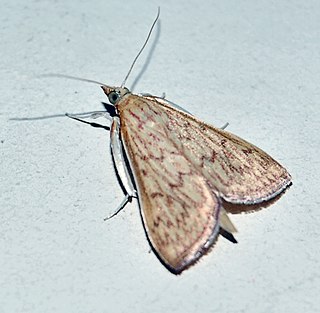 W
WThe Angoumois grain moth is a species of gelechioid moth. It is the type species of its genus Sitotroga, placed in the subfamily Pexicopiinae of the twirler moth family (Gelechiidae). Formerly, it was included in the "Chelariinae", which more recent authors do not separate from the Pexicopiinae and usually even do not consider a distinct tribe ("Chelariini") within them.
 W
WAntigastra catalaunalis is a species of moth of the family Crambidae. The species was described by Philogène Auguste Joseph Duponchel in 1833. It is endemic to tropical and subtropical areas, but is also found in other areas due to its migratory nature.
 W
WThis is a list of butterflies of Saudi Arabia. About 79 species are known from Saudi Arabia.
 W
WCerocala sokotrensis is a moth of the family Erebidae.
Palepicorsia is a genus of moths of the family Crambidae. It contains only one species, Palepicorsia ustrinalis, which is found on Sardinia and in France, Spain and Portugal, as well as in Saudi Arabia, the United Arab Emirates, Yemen, Turkmenistan, Iran, Pakistan and North Africa, including Tunisia.
 W
WSphingonaepiopsis nana, the savanna hawkmoth, is a moth of the family Sphingidae. The species was first described by Francis Walker in 1856. It is found from the Kerman Province, Hormozgan Province and Baluchistan in southern Iran and western Saudi Arabia to the southern Arabian Peninsula and eastern Africa to Natal, west to the Gambia.
 W
WThysanoplusia exquisita is a moth of the family Noctuidae. it is found in southern Africa, from Angola to Madagascar and South Africa, as well as in Oman, Afghanistan, Iran and Pakistan.
 W
WThe Turkestan cockroach, also known as the rusty red cockroach, red runner cockroach or simply rusty red, red runner, or lat, is a primarily outdoor-dwelling cockroach native to an area from northern Africa to Central Asia. Adults measure around 3 cm (1.2 in) in length. Adult males are a brownish orange or red, are slender, and have long, yellowish wings which allow it to attract females and to glide. Adult females are dark brown to black, with cream-colored markings on the shield and a cream-colored stripe edging its wings; they are broader than males, and have short vestigial wings. Nymphs are brown in front, black on the rear, and are wingless.